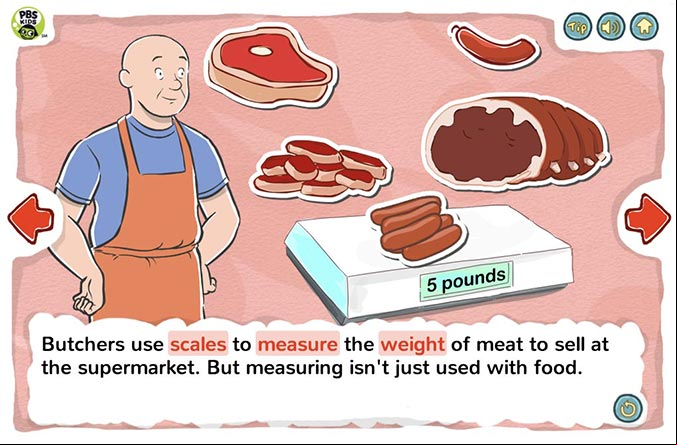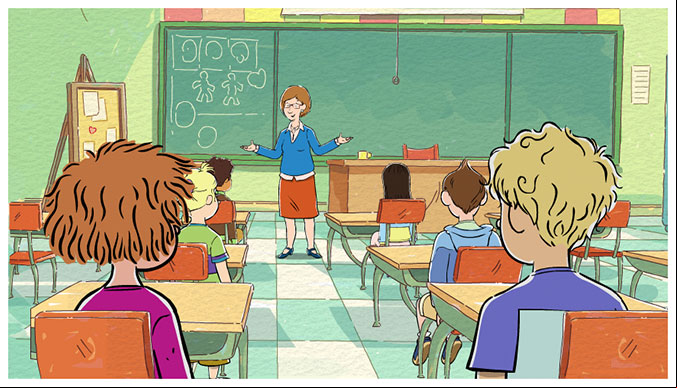Classroom Tips 53f3v
About Martha's True Stories 5j92o
Martha's True Stories have been designed for children to enjoy on their own or with an older reader or parent. However, the stories can also be used in a variety of ways in the classroom. Because they cover a range of STEM (Science, Technology, Engineering, and Math) topics, and include vocabulary prompts and definitions, you can use them in conjunction with existing lessons or you can build lessons around them. The Parent Tips (click on "Tips") contain activity ideas that you can easily adapt for your classroom. See the Martha's True Stories Chart for a description of each text and video, the targeted vocabulary words, and additional ideas for using other nonfiction sources. 2t2k1j


Focus on Nonfiction 4a536z
If you are teaching about fiction and nonfiction, use Martha's True Stories as examples of fun nonfiction texts. As children read them, have them think about the information the stories provide. Be sure to include the non-narrative texts (recipe, poster, website, instructions) as additional examples of nonfiction. Build on the topic by providing other nonfiction books. Note the books' typical nonfiction elements (table of contents, chapter and section headings, sidebars, captions, diagrams, indices, and so on). Compare and contrast the books with Martha's True Stories. What elements do they have in common? How are they different? Note the playful way the Word Bones glossary and the Quizmo vocabulary quizzes in Martha's True Stories are designed, which would not be possible in a print book. (For other benefits of using interactive picture books in the classroom, see "Teaching with Interactive Picture E-Books in Grades K-6" by Heather Ruetschlin Schugar, Carol A. Smith, and Jordan T. Schugar in The Reading Teacher, Vol. 66, May 2013.)
The interactive texts are ideal for partner or group reading. You can use them for a cross-age Reading Buddies session (with younger or older buddies) or with a same-age Reading Buddies pair. Less proficient readers can use the "sound on" option to check their decoding and understanding. Average or more advanced readers may enjoy rereading the books with the sound on to hear the characters' voices or for another reading experience. You can also display the story on a smart board in order to share with the whole class as part of a lesson. You can and print out PDFs of each story as well.
To comprehension, you can teach children to use the PAWS* method. This strategy can also help to build fluency.
P = Preview and predict. Look through the book and think about what you will read.
A = Ask and answer. As you read, ask and answer questions about what you've read.
W/S = Wrap Up with a Summary. Summarize what you read first, next, and last.
If you are teaching about a particular subject, such as the environment, use the interactive story—and the related Martha Speaks episode—as a way to engage children in the topic. You can also use the Quizmo quizzes and the Word Bones glossary, offered after each story or text to reinforce concepts that students have learned.

Focus on Vocabulary 1v2x4w
In addition to providing informational text, each story has been designed to teach nine, high-level oral vocabulary words. As they read the text, children can use the pictures and the context for clues to the meaning of the words or they can click on the word for a child-friendly definition.
To help children learn the new vocabulary words, have them use the PET* method. (Tell children to first turn off the sound feature.)
P = Pronounce the word. Have students say the word or help them sound it out.
E = Explain the word. Provide students with a child-friendly definition. Provide lots of examples in context. ELL students may want to use the word in their home language.
T = Try it out. Have children try out the word in a new sentence.
Children can go back and forth through the story to get more comfortable with the vocabulary. As they read the story several times through, their fluency will also improve.
The Word Bones glossary that comes at the end of each story is another great way to reinforce vocabulary knowledge and to check on children's understanding of the words. The quizzes give children a chance to test their knowledge. Student pairs can take turns answering the questions or picking out words from the glossary. They can also repeat the quizzes until they know all of the words.
Use the interactive stories as an inspiration for children to create their own nonfiction texts. Whether they choose a story style or another nonfiction format, they can create reports, homework assignments, and multimedia presentations.
* The PET and PAWS strategies were developed by Martha Speaks advisor Dr. Rebecca Silverman, University of Maryland.

 Contents:
Contents: